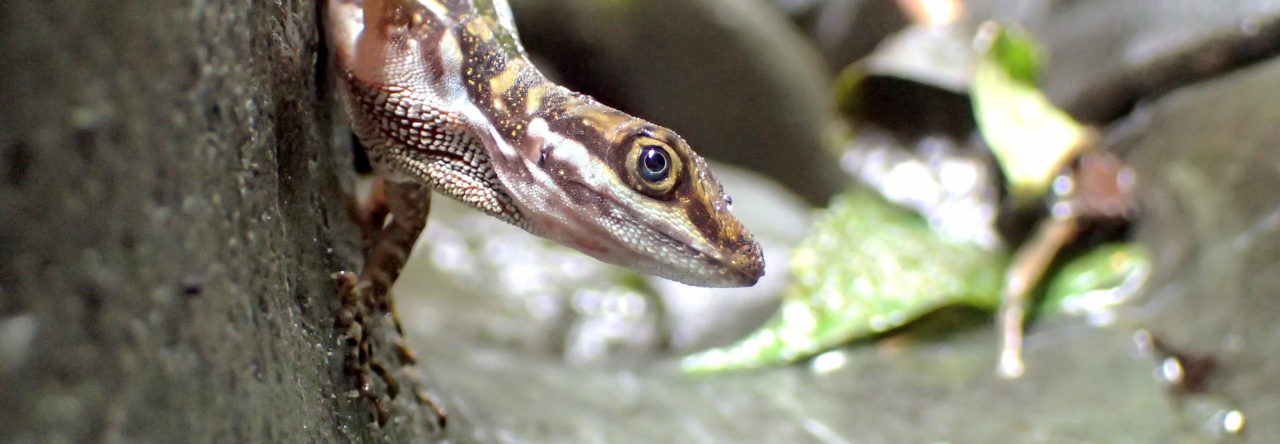
Ecuador’s most wanted! This lizard was thought to be extinct for nearly fifty years, and still after its “rediscovery” in 2005, it remains hard to locate.

Most records of Horned Anole are in disturbed areas, including near roads vegetation, botanical gardens and bamboo trees.
It took me more than two years of constant visits to Mindo, a cloud forest-town in the Western Ecuadorian Foothills, to meet with the Horned Anole (Anolis proboscis)! I always felt it was a mythological reptile, not only for Ecuadorian herps but throughout the world. Has anyone seen a lizard with a long appendix on the tip of his nose, a wide color throughout the body, prehensile tail and even spines on the back? It is difficult not to speak mystically when we refer to Horned Anole.
For over 50 years it was listed as “Possibly extinct,” until 2005, when a group of Ecuadorian scientists “rediscovered” it. But it was not until two years ago when the global and local Anole experts, led by Jonathan Losos, Steven Poe and Fernando Ayala, started several expeditions to investigate everything about its morphology, phylogeny and natural history.
The Horned Anole is a diurnal and slow-moving lizard that usually is found perched between 4-8 meters above the ground. Although most records are in vegetation on roadsides, highways and near open areas can be very difficult to find due to their excellent camouflage that blends perfectly with twigs full of mosses, lichens and epiphytes, perfectly rhyming its colorful skin.
But what use their proboscis? Sexual selection and defense of territory are the first hypotheses that leap to the mind. Science will tell us soon! But even that, we are left to enjoy its beauty and unparalleled mystique.

Definitely its silhouette is unmistakable. His sharp proboscis distinguishes it from all Ecuadorian lizards.

It can be difficult to find. Not only because they are commonly perched on high branches, but also for their camouflage, forming an ideal combination with branches and colorful leaves.

It is slow-moving and spends most of its time 450–800 cm from ground and feeds on a variety of arboreal arthropods.
- Colors And Shapes Of The Horned Anole - May 13, 2013




Pat Shipman
How totally amazing!
Christopher V. Anderson
Such a cool species! They remind me so much of Calumma gallus from Madagascar (http://www.arkive.org/calumma/calumma-gallus/image-G130958.html), particularly in silhouette.
Jaime García
Great!!!
Julienne Ng
Gorgeous photos of a beautiful anole!
Skip (James) Lazell
Truly amazing animals! I remember A. proboscis well but had no idea Calumma gallus existed. Thanks! Skip